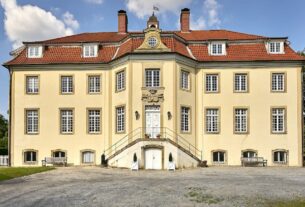Craftsmanship has forever been a strong method for communicating the profundities of human inclination and creative mind. From the earliest cavern artworks to present-day computerized manifestations. Specialists have ceaselessly looked for better approaches to convey their contemplations and sentiments. One such inventive and exceptional type of articulation is its specialty of it. This captivating and moderately dark work of art has been acquiring consideration lately for its particular way of dealing with narrating and imagination. In this article, we will investigate the universe of it, its beginnings, methods, and the effect it has on the two specialists and watchers.
Origins of Worgle
The expression “Worgle” is accepted to have begun from a mix of the words “word” and “gaze.” It was begun by a visionary craftsman named Carla Novak in the mid-2000s. Novak was interested in consolidating the composed word with visual craftsmanship to make another type of articulation. She felt that customary artistic expressions, while strong by their own doing, couldn’t frequently convey the intricacy of human feelings and contemplations. Novak tried to overcome this issue by blending the composed word with visual components.
Worgle draws motivation from different workmanship developments and scholarly practices, including oddity, dynamic expressionism, and substantial verse. Novak’s initial examinations involved making unique compositions and afterward overlaying them with divided, graceful text. This juxtaposition of symbolism and language made a one-of-a-kind and dazzling combination of two particular fine arts.
The Technique of Worgle
Worgle is portrayed by its utilization of words as both a visual and story part. Craftsmen make pieces by following a multi-step process that includes painting or making. A visual synthesis first and afterward integrating text into the work of art. The text is frequently manually written or incorporated carefully, contingent upon the craftsman’s inclination.
The decision of text in Worgle is critical, as it fills in as a reciprocal or differentiating component to the visual part of the craftsmanship. Craftsmen might utilize their compositions, passages from writing, statements, or even irregular expressions to summon explicit feelings or thoughts. The text can be decipherable or darkened, contingent upon the craftsman’s goal. Some pieces highlight lucid stories, while others embrace vagueness and open understanding.
Variety assumes a critical part in Worgle, as specialists use it to convey feelings and make a visual air. The selection of varieties can upgrade or diverge from the printed components, making a unique interaction among visual and etymological components. This juxtaposition frequently urges watchers to connect profoundly with the work of art, thinking about the connection between the text and the symbolism.
The Impact of Worgle
Worgle’s effect on the two craftsmen and watchers is significant. For specialists, it gives another road to self-articulation that permits them to join their adoration for words and visuals. Numerous specialists view Worgle as a profoundly private and soothing cycle, as they can investigate their considerations, encounters, and feelings in an extraordinary and significant way.
Worgle additionally challenges customary thoughts of workmanship and account. It obscures the lines between painting and writing, welcoming craftsmen to explore different avenues regarding the collaboration between the two. This combination of works of art supports imaginative development and pushes the limits of innovativeness.
Watchers, then again, are attracted to Worgle for its cryptic and provocative nature. The blend of visual and printed components frequently prompts watchers to take part in a more profound degree of translation. The uncertainty of Worgle pieces urges watchers to carry their encounters and viewpoints to the craftsmanship, making each experience a novel and individual excursion.
The Evolution of Worgle
Since its beginning, Worgle has developed and broadened. Craftsmen from different foundations and societies have embraced this fine art, injecting it with their extraordinary viewpoints and styles. A few craftsmen center around the theoretical and strange, making fanciful scenes that challenge the limits of the real world. Others use Worgle to resolve social issues, passing strong messages on through the blend of message and symbolism.
The appearance of computerized innovation has additionally extended the conceivable outcomes of Worgle. Specialists currently approach many advanced instruments that take into account more prominent trial and error and control of text and visuals. Computerized Worgle has acquired fame in the web-based workmanship local area, empowering craftsmen to contact a worldwide crowd and team up with individual creatives.
Worgle in Contemporary Art
As of late, Worgle has started to earn respect in contemporary craftsmanship circles. Displays and presentations committed to Worgle have arisen, exhibiting crafted by gifted craftsmen who are pushing the limits of this novel fine art. Authorities and craftsmanship fans are progressively attracted to Worgle for its capacity to incite thought and feeling.
Worgle has additionally tracked down its position in the realm of writing. A few scholars have tried different things by integrating Worgle components into their books and verse, obscuring the lines between customary narrating and visual craftsmanship. This cross-fertilization of creative disciplines has prompted the rise of another type of half-breed writing that challenges traditional story shows.
Conclusion
The craft of Worgle is a demonstration of the limitless inventiveness of the human soul. It addresses a combination of words and visuals that rises above customary limits, offering craftsmen an interesting stage for self-articulation and watchers a charming encounter that draws in both the mind and feelings. As Worgle proceeds to develop and earn respect, it fills in as an update that craftsmanship isn’t bound to a solitary medium or strategy.




